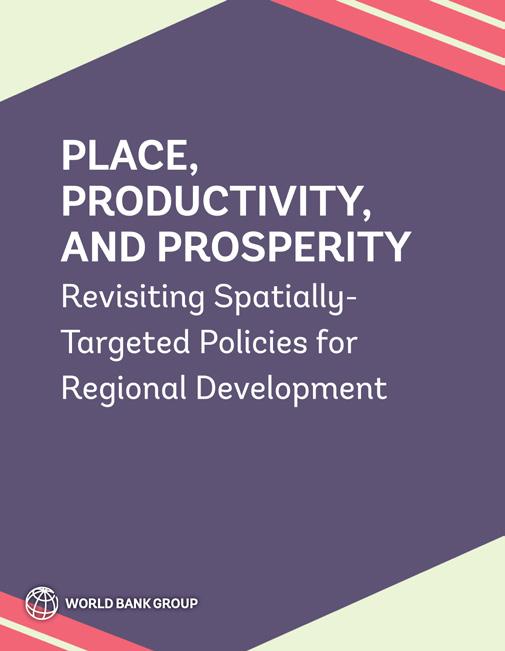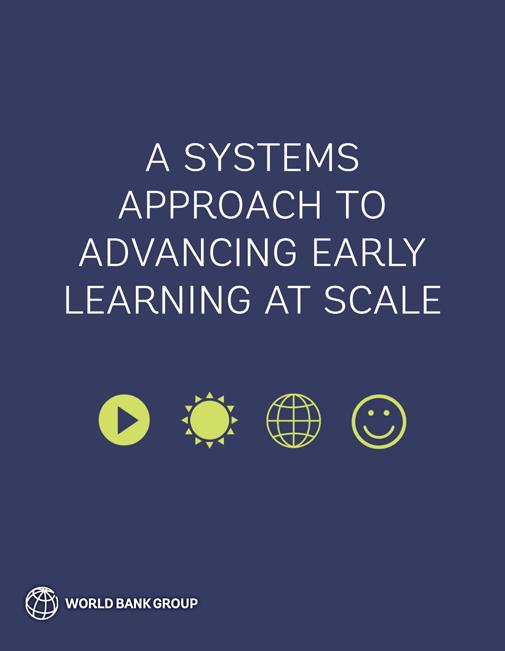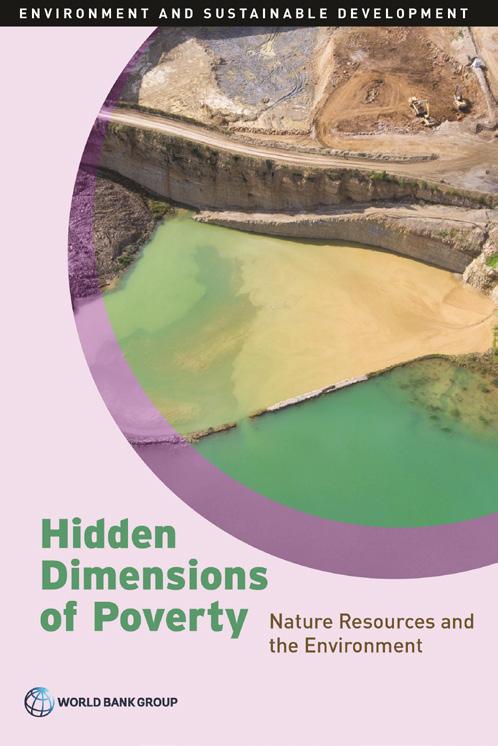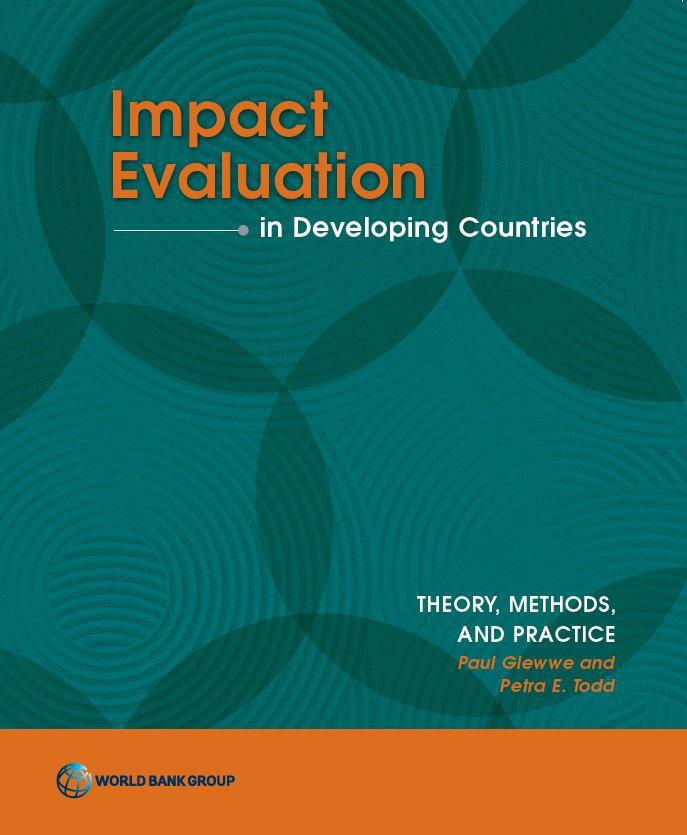
19 minute read
Featured Titles
CHANGING WEALTH OF NATIONS 2021
Managing Assets for the Future
Advertisement
By the World Bank
Wealth, measured comprehensively to include all assets (produced, human, and natural capital) underpins national income, and sustained growth over the long term requires investment in this broad portfolio of assets. Changing Wealth of Nations 2020 firmly establishes wealth as a measure of sustainability and key component of country analytics by 1) expanding the coverage and improving the quality of all assets, notably natural capital, and 2) demonstrating how wealth accounts can be applied in analytics to areas of major policy concern, including climate change and natural resource policy reform.
THE ECONOMIC CASE FOR NATURE
By Giovanni Ruta and Raffaello Cervigni
Biodiversity and ecosystems are being lost at an alarming rate. The Intergovernmental Science-Policy Platform on Biodiversity and Ecosystem Services (IPBES), recently warned that the health of ecosystems on which humans and all other species depend is deteriorating more rapidly than projected. Around 1 million animal and plant species (out of an estimated 8 million in total) are now threatened with extinction, many within decades. This is more than ever before in human history. The average abundance of native species in most major landbased habitats has fallen by at least 20 percent, mostly since 1900. More than 40 percent of amphibian species, almost 33 percent of reef forming corals, and more than one-third of all marine mammals are threatened. The picture is less clear for insect species, but available evidence supports a tentative estimate of 10 percent under threat. At least 680 vertebrate species had been driven to extinction since the 16th century; more than 9 percent of all domesticated breeds of mammals used for food and agriculture had become extinct by 2016, and with at least 1,000 more breeds are still threatened.
This will eventually translate into impacts on economies, livelihoods, food security, health, and quality of life worldwide. Current negative trends in biodiversity and ecosystems will undermine progress toward 80 percent (35 out of 44) of the assessed targets of the Sustainable Development Goals related to poverty, hunger, health, water, cities, climate, oceans, and land (SDGs 1, 2, 3, 6, 11, 13, 14, and 15). The loss of biodiversity has been shown to have not only environment consequences but also developmental, economic, security, societal, and moral consequences.
September 2021. 250 pages. Stock no. C211590 (ISBN: 978-1-4648-1590-4). US$48.50

November 2021. 150 pages. Stock no. C211749 (ISBN: 978-1-4648-1749-6). US$43.00
AT YOUR SERVICE?
The Promise of Services-Led Development
By Gaurav Nayyar, Mary Hallward-Driemeier, and Elwyn Davies
At Your Service?
The Promise of Services-Led Development

Gaurav Nayyar, Mary Hallward-Driemeier, and Elwyn Davies
August 2021. 280 pages. Stock no. C211671 (ISBN: 978-1-4648-1671-0). US$48.50
Throughout history, industrialization has been synonymous with development. However, the trend of premature deindustrialization and the spread of automation technologies associated with Industry 4.0 has raised concerns that the development model based on export-led manufacturing seen in East Asia will be harder for hitherto less industrialized countries to replicate in the future. Can services-led development be an alternative? Contrary to conventional wisdom, the features of manufacturing that were considered uniquely conducive for productivity growth—such as international trade, scale economies, intersectoral linkages, and innovation—are increasingly shared by the services sector. But services are not monolithic. The twin gains of productivity growth and largescale job creation for relatively low-skilled workers are less likely to come together in any given services subsector. The promise of services-led development in the future will be strengthened to the extent that technological change reduces the trade-off between productivity and jobs, and growth opportunities in services with the potential for high productivity do not depend on a manufacturing base. Considering technological change and linkages between sectors while differentiating across types of services, this book assesses the scope of a servicesdriven development model and policy directions that maximize its potential.
PLACE, PRODUCTIVITY, AND PROSPERITY
Revisiting Spatially-Targeted Policies for Regional Development
By Arti Grover, Somik Lall, and William Maloney

October 2021. 240 pages. Stock no. C211670 (ISBN: 978-1-4648-1670-3). US$48.50
The spatial dimension of productivity and inclusive growth has moved to center stage.The geographic concentration of economic activity has boosted productivity, growing disparities between prospering places and those left behind have polarized countries, and rapid urbanization has often led to dysfunctional cities. In response, governments have put forward a variety of spatial policies that include special economic zones, business incentives, transport corridors, revival of lagging areas, and development of new urban centers. Place, Productivity, and Prosperity develops a framework for thinking through such spatially targeted policies and assessing their social value, while presenting new evidence on key empirical issues. It highlights the constraints imposed by path dependence and coordination failures in reorienting the spatial economy. It also considers the role of complementary policies, including market institutions, in enhancing the benefits and managing the downside risks with spatially-targeted interventions. The framework is applied to evaluate several popular spatial interventions.
GLOBAL PRODUCTIVITY
Trends, Drivers, and Policies
Edited by Alistair Dieppe
The COVID-19 pandemic struck the global economy after a decade that featured a broad-based slowdown in productivity growth. Global Productivity: Trends, Drivers, and Policies presents the first comprehensive analysis of the evolution and drivers of productivity growth, examines the effects of COVID-19 on productivity, and discusses a wide-range of policies needed to rekindle productivity growth. The book also provides a far-reaching dataset of multiple measures of productivity for up to 164 advanced economies and emerging market and developing economies and introduces a new sectoral database of productivity.
THE LONG SHADOW OF INFORMALITY
Challenges and Policies
By Franziska Ohnsorge and Shu Yu
A large percentage of workers and firms operates in the informal economy, outside the line of sight of governments in emerging market and developing economies. This may hold back the recovery in these economies from the deep recessions caused by the COVID-19 pandemic—unless governments adopt a broad set of policies to address the challenges of widespread informality. This study is the first comprehensive analysis of the extent of informality and its implications for a durable economic recovery and for long-term development. It finds that pervasive informality is associated with significantly weaker economic outcomes—including lower government resources to combat recessions, lower per capita incomes, greater poverty, less financial development, and weaker investment and productivity.

June 2021. 460 pages. Stock no. C211608 (ISBN: 978-1-4648-1608-6). US$59.50

December 2021. 350 pages. Stock no. C211753 (ISBN: 978-1-4648-1753-3). US$53.95
AN INVESTMENT PERSPECTIVE ON GLOBAL VALUE CHAINS
By Christine Zhenwei Qiang, Yan Liu, and Victor Steenbergen
Qiang, Liu, Steenbergen An Investment Perspective on Global Value Chains
Christine Zhenwei Qiang | Yan Liu | Victor Steenbergen
June 2021. 398 pages. Stock no. C211683 (ISBN: 978-1-4648-1683-3). US$53.95
An Investment Perspective on Global Value Chains examines the role of foreign direct investment (FDI) in global value chains (GVCs). To stimulate economic transformation through GVCs, policy makers in developing countries need to better understand the business strategies of multinational corporations (MNCs), internationalization pathways for domestic firms, and how policies can create a favorable environment for both types of firms. Part I brings together the latest theories and empirical evidence to illustrate the mutually reinforcing relationship between FDI and GVC participation. It argues that MNCs have driven the phenomenal rise of GVCs in the past three decades as they have unbundled production processes and spread their networks on a global scale. Domestic firms benefit considerably from their participation in GVCs as they learn from MNCs through investment, partnerships, or trade. Part II includes six case studies examining the approaches of developing countries in leveraging FDI to stimulate and facilitate GVC participation and upgrading. The cases include Kenya (horticulture), Honduras (apparel), Malaysia (electronics), and Mauritius (tourism). Another case focuses on the digital economy for the Republic of China, India, and Korea. Each case study presents a different approach by which policy makers have leveraged FDI to stimulate and facilitate GVC participation and upgrading.
THE DISTRIBUTIONAL IMPACTS OF TRADE
By Jakob Engel, Deeksha Kokas, Gladys Lopez-Acevedo, and Maryla Maliszewska
TRADE AND DEVELOPMENT SERIES
The Distributional Impacts of Trade
Empirical Innovations, Analytical Tools, and Policy Responses
Jakob Engel Deeksha Kokas Gladys Lopez-Acevedo Maryla Maliszewska
TRADE AND DEVELOPMENT
Trade is a well-established driver of growth and poverty reduction. But changes in trade policy also have distributional impacts that create winners and losers. It is vital to understand and clearly communicate how trade affects economic wellbeing across all segments of the population, as well as how policies can more effectively ensure that the gains from trade are distributed more widely. The Distributional Impacts of Trade: Empirical Innovations, Analytical Tools, and Policy Responses provides a deeper understanding of the distributional effects of trade across regions, industries, and demographic groups within countries over time. It includes an overview (chapter 1); a review of innovations in empirical and theoretical work covering the impacts of trade at the subnational level (chapter 2); highlights from empirical case studies on Bangladesh, Brazil, Mexico, South Africa, and Sri Lanka (chapter 3); and a policy agenda to improve distributional outcomes from trade (chapter 4).
INNOVATIONS IN TAX COMPLIANCE
By Roel Dom, Anna Custers, Stephen Davenport, and Wilson Prichard
Recent decades have witnessed important progress in strengthening tax systems in developing countries. Yet many areas of reform have remained stubbornly resistant to major improvements; overall revenue collection still falls short of what is needed to support effective governance and service delivery, while tax collection is too often characterized by high rates of evasion among large corporations and the rich and disproportionate, though often hidden, burdens on lower-income groups. As countries around the world deal with large COVID-19-induced debt burdens, a focus on strengthening tax systems is especially timely. Innovations in Tax Compliance draws on recent research and experience to present a new conceptual framework to guide more effective approaches to reform. Building on the achievements of recent decades, it argues for an expanded focus on the overlapping goals of building trust, navigating political resistance, and tailoring reform to unique local contexts through a focus on identifying the most binding constraints on reform. This focus, it argues, can lead not only to greater compliance, increased fairness, and higher revenues, but can also contribute to the building of state capacity, sustained political support for further reforms, and stronger fiscal contracts between citizens and governments.
FROM PLATITUDES TO PRACTICE 2.0
Targeting
By the World Bank
This report will help policy makers to better design and implement targeted safety nets programs around the world. The first section aims to help analysts and policy makers to evaluate program performance and the distributional impacts of social programs more thoroughly by presenting a pedagogical piece describing the pros/ cons of different metrics used to evaluate targeting, their properties, and how/ when to use them to best advantage. The second section aims to provide empirical evidence on the performance of social programs, across a wide range of contexts, program types, and targeting methods. Such benchmarking can help set realistic expectations for policy makers and help empirically ground the often hot debates on targeting. The third one provides a basic framework, concepts, terminology, and “how-to” of several of the most used targeting methods addressing both the technical aspects and operational business rules of methods. The fourth, and final one, reviews and evaluates the latest methods and technologies and use of alternative data sources to build and adjust poverty targeting algorithms.

November 2021. 340 pages. Stock no. C211755 (ISBN: 978-1-4648-1755-7). US$53.95

October 2021. 150 pages. Stock no. C211751 (ISBN: 978-1-4648-1751-9). US$43.00
By Marguerite Clarke and Diego Luna-Bazaldua
national assessments of educational achievement
PRIMER on LARGE-SCALE ASSESSMENTS of EDUCATIONAL ACHIEVEMENT
Marguerite Clarke and Diego Luna-Bazaldua
NATIONAL ASSESSMENTS OF EDUCATIONAL ACHIEVEMENT
June 2021. 160 pages. Stock no. C211659 (ISBN: 978-1-4648-1659-8). US$43.00
To improve their education systems, countries around the world have increasingly initiated national largescale assessment programs or participated in international or regional large-scale assessment studies for the first time. Well-constructed large-scale assessments can provide credible information on student achievement levels, which, in turn, can promote better resource allocation to schools, stronger education service delivery, and improved learning outcomes. The World Bank developed this Primer on Large-Scale Assessments of Educational Achievement as a first-stop resource for those wanting to understand how to design, administer, analyze, and use the results from these assessments of student achievement. The book addresses frequently asked questions from people working on large-scale assessment projects and those interested in making informed decisions about them. Each chapter introduces a stage in the assessment process and offers advice, guidelines, and country examples. This book also reports on emerging trends in large-scale assessment and provides updated information on regional and international large-scale assessment programs.
A SYSTEMS APPROACH TO ADVANCING EARLY LEARNING AT SCALE
By Magdalena Bendini, Amanda Devercelli, and Elaine Ding

October 2021. 200 pages. Stock no. C211741 (ISBN: 978-1-4648-1741-0). US$48.50
High-quality early childhood education (ECE) can foster foundational skills, boost children's ability to learn, and prepare them for school. Early childhood is a unique period of development, and well-designed ECE programs can harness children's natural abilities and motivation to learn. Children who attend ECE programs that effectively cultivate their abilities and motivation to learn have higher attendance and better achievement rates in primary school, and they are less likely to repeat, drop out, or require remedial or special education. Moreover, the skills children develop during childhood are important predictors of later academic and life success. Quality early learning programs can also promote equity: in both rich and poor countries, the most disadvantaged children benefit the most from quality ECE programs. Multiple fields of inquiry, including neuroscience, developmental and cognitive psychology, education, and economics, can inform the design of ECE programs. This report will distill the relevant evidence from across these fields to produce actionable guidance on how to build quality ECE programs that prepare all children to thrive in school and beyond.
MINI GRIDS FOR HALF A BILLION PEOPLE
Market Outlook and Handbook
By the World Bank
The objective of Mini Grids for Half A Billion People is to present road-tested options and examples from the frontier of mini grid development in each of the topics presented in this book, which decision makers can modify and implement to scale up mini grid deployment. By acknowledging different national-level approaches to mini grids and providing context-specific considerations for implementation, it provides an adaptive approach to helping countries achieve their electrification targets.
HIDDEN DIMENSIONS OF POVERTY
Natural Resources and the Environment
By Carter Brandon and Harun Dogo
This report focuses on the impact of environmental degradation on the poorest countries and the sustainability of the economic development model. The global pattern of development observed over the past 25 years has yielded impressive returns, but they come at a high cost of environmental degradation. Yet, we find that the environmental costs of development are disproportionately borne by the extreme poor and that the changing quality of local natural capital plays a determining role in the process of poverty reduction. Importantly, regardless of the definition of sustainability used, the historical model of development does not appear to be sustainable in the poorest areas of the world. Therefore, achieving the World Bank's poverty goals in a sustainable manner will require more aggressive policy changes than are generally expected. No single set of policy recommendations can apply to all countries, as decoupling economic and poverty alleviation growth from environmental damages depends on the country context. Still, one truism does apply to all countries: the Twin Goals of poverty alleviation and shared prosperity simply cannot be achieved in an economy and environment that are unsustainable. Maintaining the sustainable use of natural capital and healthy ecosystems is a fundamental part of what countries need to be able to achieve the Twin Goals.

July 2021. 456 pages. Stock no. C211594 (ISBN: 978-1-4648-1594-2). US$59.50

ENVIRONMENT AND SUSTAINABLE DEVELOPMENT
August 2021. 250 pages. Stock no. C211246 (ISBN: 978-1-4648-1246-0). US$45.00
EBB AND FLOW
Volume 1: Water, Migration, and Development
By Esha Zaveri, Jason Russ, Amjad Khan, Richard Damania, Edoardo Borgomeo, and Anders Jägerskog

September 2021. 100 pages. Stock no. C211745 (ISBN: 978-1-4648-1745-8). US$43.00
Migration shapes the lives of those who move, and it transforms the geographies and economies of their points of departure and destinations alike. The water sector, and the availability of water itself, both implicitly and explicitly shape migration flows. Ebb and Flow explores the why, who, where, and what that are at the nexus of water and migration, and it considers the implications for economic development. Volume 1 provides the first-ever global assessment of these issues and how they relate to migration within national borders. The new analyses highlight important nuances that are critical for policy design and building resilience within communities.
EBB AND FLOW
Volume 2: Water in the Shadow of Conflict in the Middle East and North Africa
By Esha Zaveri, Jason Russ, Amjad Khan, Richard Damania, Edoardo Borgomeo, and Anders Jägerskog

September 2021. 100 pages. Stock no. C211746 (ISBN: 978-1-4648-1746-5). US$43.00
Volume 2 of Ebb and Flow provides unique regional insights into water and migration dynamics. It focuses on the world's most water-scarce region, where already high levels of intraregional and international migration have recently met with unprecedented levels of conflict-induced forced displacement.
IMPACT EVALUATION IN INTERNATIONAL DEVELOPMENT
In Developing Countries
Edited by Paul Glewwe and Petra E. Todd
Impact evaluations are studies that attempt to measure the causal impact of a project, program, or policy on one or more outcomes of interest. This book provides a comprehensive exposition on how to conduct impact evaluations. Part I provides an overview of impact evaluations and comprises five chapters that are accessible to readers who have few or none of the technical (statistical and econometric) skills needed to conduct impact evaluations. Parts II and III make use of statistical and econometric methods; they are at a level similar to a graduate-student course but are written to make them accessible to the ambitious reader whose skills are not at that level. Chapters 11 and 12 present regression methods, including difference-in-differences estimation. Matching methods are described in Chapter 13, and regression discontinuity methods are covered in Chapter 14. Instrumental variable methods, including the estimation of local average treatment effects, are discussed in detail in Chapter 15. Chapters 16 and 17 cover more advanced topics: quantile treatment effects and control function methods, respectively. Part IV then considers more practical issues when conducting impact evaluations, including designing questionnaires (Chapter 18), data collection methods and survey management (Chapters 19 and 20), and disseminating results to policy makers (Chapter 21). Finally, Part V addresses two topics in impact evaluation: qualitative methods for conducting impact evaluations (Chapter 22) and cost-benefit and cost-effectiveness analysis (Chapter 23).

August 2021. 570 pages. Stock no. C211497 (ISBN: 978-1-4648-1497-6). US$59.95
DEVELOPMENT RESEARCH IN PRACTICE
The DIME Analytics Data Handbook
By Kristoffer Bjärkefur, Luiza Cardoso de Andrade, Benjamin Daniels, and Maria Ruth Jones
Development Research in Practice leads the reader through a complete empirical Development Research in Practice research project, providing links to continuously updated resources on the DIME Wiki as well as illustrative examples from the Demand for Safe Spaces study. The handbook is intended to train users of development data how to handle data e ectively, e ciently, and ethically. is intended to teach all users of development “In the DIME Analytics Data Handbook, the DIME team has produced an extraordinary public good: a detailed, comprehensive, yet easy-to-read manual for how to manage a data-oriented research project from beginning to end. It o ers everything from big-picture guidance on the data how to handle data effectively, efficiently, and ethically. The handbook leads determinants of high-quality empirical research, to specifi c practical guidance on how to implement specifi c workfl ows—and includes computer code! I think it will prove durably useful to a broad range of researchers in international development and beyond, and I learned new practices that I plan on adopting in my own research group.”the reader through a complete empirical research project, providing links to —Marshall Burke, Associate Professor, Department of Earth System Science, and Deputy Director, Center on Food Security and the Environment, Stanford University “Data are the essential ingredient in any research or evaluation project, yet there has been continuously updated resources on the DIME Wiki, as well as illustrative examples too little attention to standardized practices to ensure high-quality data collection, handling, documentation, and exchange. Development Research in Practice: The DIME Analytics Data Handbook seeks to fi ll that gap with practical guidance and tools, grounded in ethics and e ciency, for data management at every stage in a research project. This excellent resource sets a new standard for the fi eld and is an essential reference for all empirical researchers.”from the Demand for Safe Spaces study conducted in Rio de Janeiro. The premise —Ruth E. Levine, PhD, CEO, IDinsight “Development Research in Practice: The DIME Analytics Data Handbook is an important resource and a must-read for all development economists, empirical social scientists, and public is that standardizing and simplifying data tasks improves research quality and policy analysts. Based on decades of pioneering work at the World Bank on data collection, enables more effective collaboration. measurement, and analysis, the handbook provides valuable tools to allow research teams to more e ciently and transparently manage their work fl ows—yielding more credible analytical conclusions as a result.” The Development Research in Practice handbook is therefore a quintessential desk reference for anyone who handles data as part of a research team, policy makers and managers who oversee such endeavors, and students in any discipline who plan to enter the modern research workforce.
—Edward Miguel, Oxfam Professor in Environmental and Resource Economics and Faculty Director of the Center for E ective Global Action, University of California, Berkeley
“The DIME Analytics Data Handbook is a must-read for any data-driven researcher looking to create credible research outcomes and policy advice. By meticulously describing detailed steps, from project planning via ethical and responsible code and data practices to the publication of research papers and associated replication packages, the DIME handbook makes the complexities of transparent and credible research easier.” —Lars Vilhuber, Data Editor, American Economic Association, and Executive Director, Labor Dynamics Institute, Cornell University ISBN 978-1-4648-1694-9 SKU 211694 DEVELOPMENT RESEARCH IN PRACTICE
| Bjärkefur, Cardoso de Andrade, Daniels, Jones THE DIME ANALYTICS DATA HANDBOOK
Kristo er Bjärkefur Luíza Cardoso de Andrade Benjamin Daniels Maria Ruth Jones





